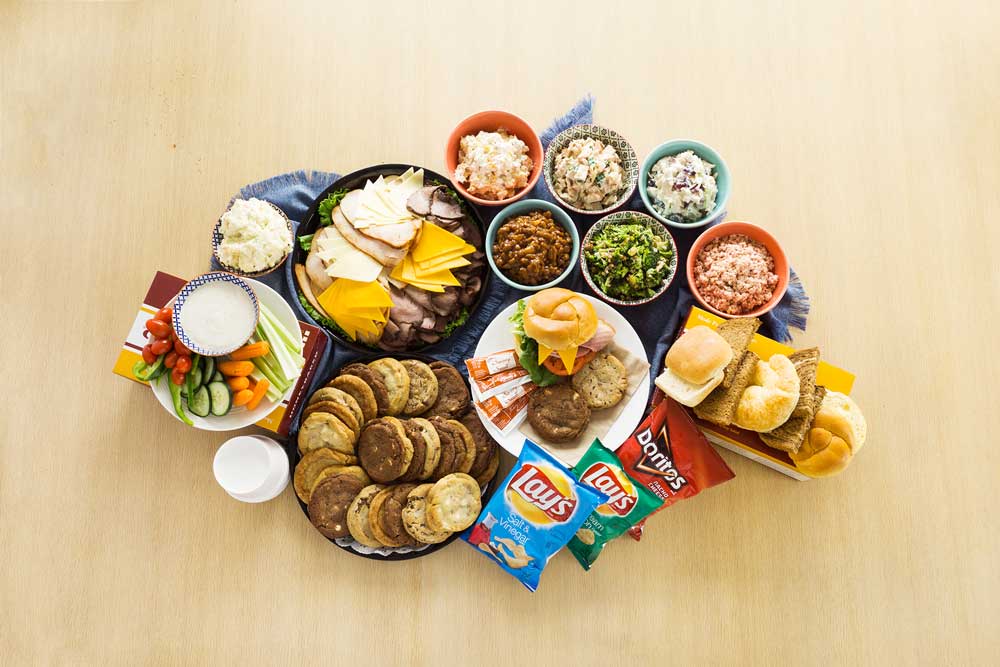Your Business Opportunities in Catering: Track Performance and Growth Potential
- Jim Rand
- •
- 4 Min Read
- •
This article is part of a series called “Getting Off-Premises”, which examines how to build an off-premises business.
Perhaps you noticed the fleet of delivery vans of other restaurants on the streets—or read about the enormous growth of the catering market. These incidents may have made a strong impression on you and piqued your interest in taking on catering. The choice to embrace the business of catering is an important financial decision. Like other commitments, such as taking on a new career path, pursuing catering requires you to determine whether the wins are worth the work. After all, some of the costs associated with start-up include an investment in extra staffing, equipment, and time. It’s natural to hesitate unless you’re certain there’s a catering opportunity open for you.
Rather than rely on feelings to steer you down this path, you should do a bit of math and market analysis. Foremost, you need data and solid indicators to rationalize your investment. As you investigate, ask yourself: Can catering be relied on to build a profitable, sustainable revenue channel? Is catering aligned with the values and philosophy of your brand? (read more here). Is the pain worth the gain?
To determine whether catering could work for your restaurant, you’ll need to do the following:
- Track the current performance of your catering business.
- Assess the growth potential of your catering business.
- Evaluate how you can differentiate your offerings from those of other restaurants in your area.
In this article I’ll walk you through the first two steps: (1) track the performance of your catering business and (2) assess its growth. If the math reveals that catering makes sense for your particular business, you can read the next installment of the “Get Off-Premises” series, which will show you (3) how to differentiate your catering offerings from the competition.
This investigation can help you to weigh out your options with more sophistication. If you can realistically expect to grow your catering business and differentiate your product, it’s time to seize your catering opportunity.
What Is Your Catering Opportunity?
In previous articles we discussed the robust catering market in the United States (read more here). The demand for catering has created an outsized pool of sales opportunities. Before you take the plunge, understand the opportunity for your particular business. Do you have an idea of your current, and potential, share of the market? A great place to start is by tracking the current profitability of your catering business.
1. Tracking Your Current Performance
Restaurants can track the performance of their catering program by looking at their sales history. Using weekly, monthly, and annual sales figures, you can determine what percentage of your total sales comes from catering in those given periods. Even if you’re not devoting many resources to catering or gaining much return on it, if you already offer some type of off-premises food, like takeout or trays of breakfast pastries, you have sales data from which to examine your catering business.
To illustrate, take the sample scenarios in the table below. If a restaurant (Billy’s Bowls) pulls in $14,440 in total weekly sales, and $720 of this comes from catering orders, catering represents roughly 5 percent of the total weekly sales. Using the same math, we can see that the catering program of another restaurant—Suzie’s Sandwiches—contributes to 3 percent of the restaurant’s total weekly sales. These calculations can be done monthly and annually to capture bigger-picture views of your catering business.

2. Is It Worth the Work? Assessing Growth Rate and Potential
Operators tend to track their sales using a sales percentage formula. However, this method of evaluation can be deceiving. Consider this scenario: if Billy and Suzie compared their sales performance strictly on percentages, Billy would appear to have a larger catering business, which is untrue. Although sales percentages can provide a way to track some of your business goals, it’s not necessarily a good indicator for the growth potential of your catering business. The performance of your catering business today is not as important as its growth potential, aka your catering opportunity. Your business’s growth potential can tell you whether investing more resources in catering is worth the upfront cost.
I recommend you track your catering sales weekly, by the frequency of catering transactions and by the size of the average check during that period. The table below illustrates what this would look like.

If your organization is already in the catering business, or even if you’re just thinking about pursuing catering as a new source of revenue, tracking your performance in this manner, in granular detail, is helpful because it:
- Tracks actual demand (i.e., transactions per week) and allows you to determine whether you have the production capacity to improve those results.
- Allows you to benchmark your results against the performance of your competitors (for this data, you’ll need to do some investigating), allowing you to forecast the potential sales-growth opportunity.
Creating a sales forecast can help you to avoid unforeseen cash flow problems and manage your production, staff, and financing needs more effectively. Prepare your catering business for the months and years ahead by determining whether you need the following:
- Additional staffing for taking orders, preparing food, and delivery.
- Additional equipment for preparing and delivering food, as well as storage space to hold packaging and other catering supplies.
- Additional marketing and sales activities to increase demand.
Once you evaluate what resources are needed, you can manage your investments to ensure your catering business stays ahead of the curve and meets, over time, your forecasted sales growth. No one relishes the idea of additional costs, but don’t be afraid to invest. If you build it, they will surely come.
How are you better than your competitors? Learn how to stand out.








